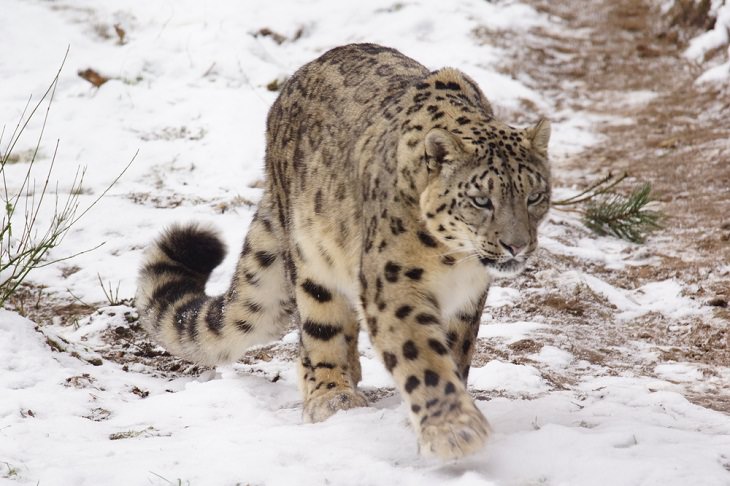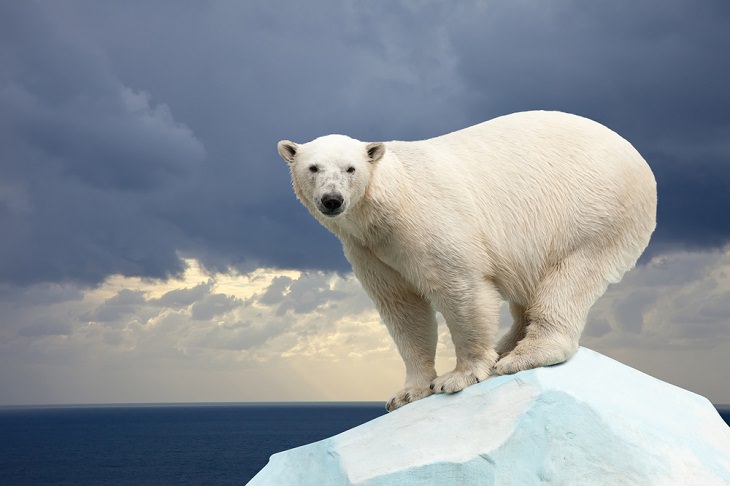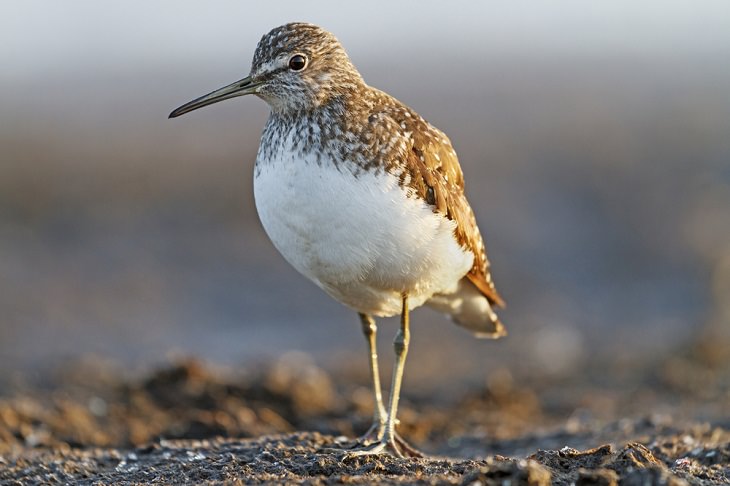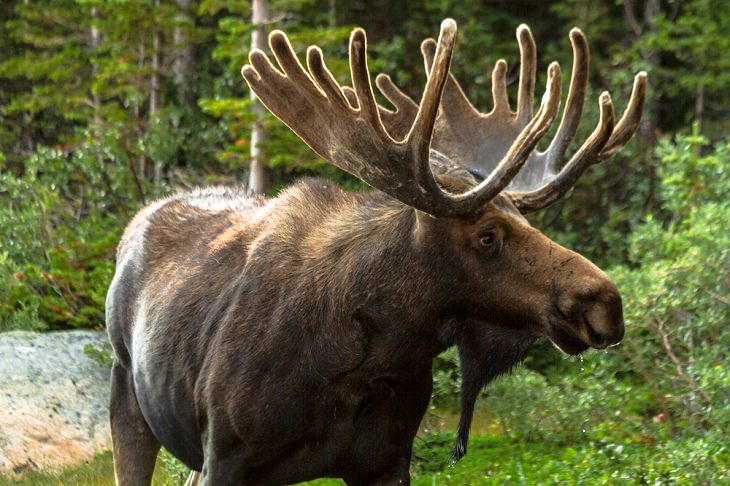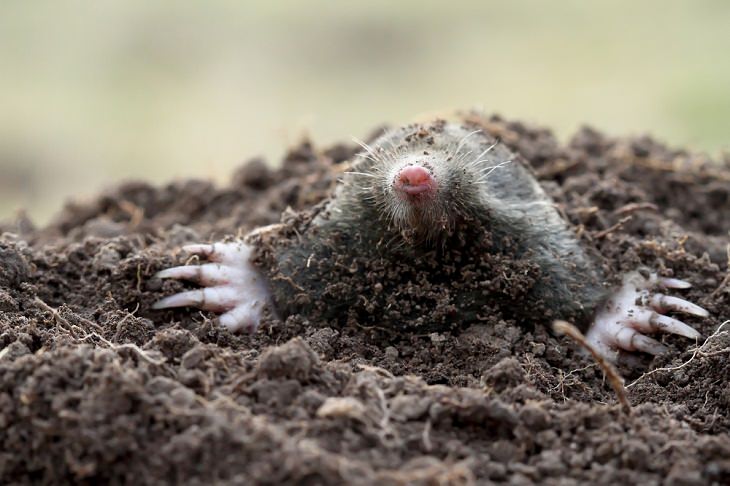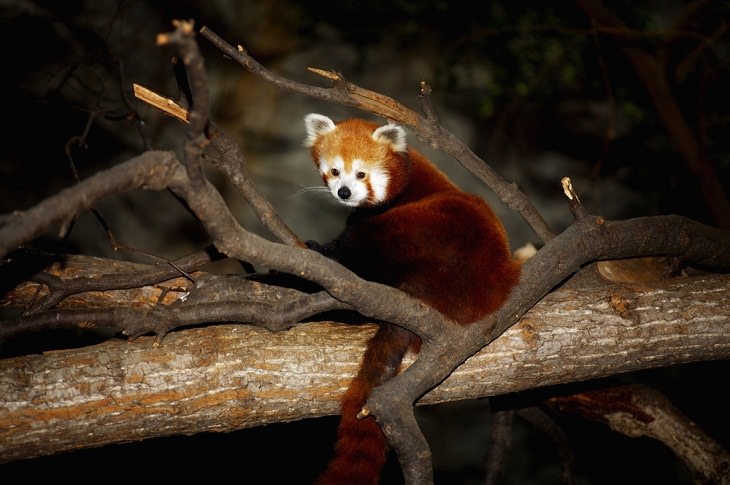1. Snow Leopard (Panthera uncial)
Elusive and solitary, the snow leopard is a remarkable animal that usually hunts at dawn and dusk. These majestic cats live in some of the harshest conditions on Earth and are found in 12 countries—including China, Bhutan, Nepal, India, Pakistan, Afghanistan, Russia, and Mongolia. They usually like to perch themselves on rocky outcrops and cliffs to keep a look on prey while remaining unseen. They also prefer to live in high alpine areas, generally above the tree line and up to 18,000 feet (5,486 meters) in elevation.
Snow leopards are highly secretive and solitary and only interact with other members of their species for mating or when they have to raise their young. They like to keep away not just from other animals but also from humans. In fact, the Snow Leopard Trust states that there’s never been a verified snow leopard attack on a human.
2. Polar Bear (Ursus maritimus)
The iconic superstars of the Arctic, the polar bears are basically solitary and mostly live and hunt alone apart from brief encounters for mating purposes. Their solitary lifestyle makes social encounters between individual polar bears extremely rare. In fact, the longest polar bears are known to live together is for three years when the mother bear has to tend to her cubs.
When they are not hunting or eating, polar bears usually like to spend their time relaxing for long periods. However, they are always on the look-out for a meal. For hunting, they usually sit on the ice by a seal breathing hole, waiting for one to pop up. Also called the white bear, sea bear, or ice bear, they are huge animals and weigh more than 453 kgs (1,000 pounds).
3. Platypus (Ornithorhynchus anatinus)
The platypus is a unique Australian species that are grouped in a separate order of mammals known as monotremes (mammals who lay eggs). Found in the freshwater rivers and streams of Eastern Australia and Tasmania, the platypus is a solitary animal who meets with other members of its kind only during the breeding season or when a mother is looking after her young. Their solitary behavior is curious because they occupy overlapping home ranges.
The platypus is also unique because of its distinct features. It appears to have the bill and feet of a duck, the tail of a beaver, and the body and fur of an otter. When first discovered, it caused much confusion among naturalists and scientists. In fact when naturalist George Shaw described the platypus in his 1799 work "The Naturalist's Miscellany,” people refused to believe him.
4. Solitary Sandpiper (Tringa solitaria)
As the name of the bird suggests, the solitary sandpiper is a reclusive and small shorebird. Unlike most other birds, it usually migrates alone rather than in flocks. This North American birdie is usually found in wooded swamps, river edges, bogs, lakes, ponds, ditches, pastures, rice fields, and wet meadows.
Curiously, though, the solitary sandpiper likes to borrow old songbird nests high in the trees rather than making its nest on the ground like other sandpipers. They are shy birds and make high-pitched, whistle-like cries when they are nervous or feel threatened. They fly away as soon as they sense some other animal is getting close. Like most solitary animals, they are only together with other sandpipers when they have to mate or when mothers have to tend to their young.
5. Moose (Alces alces)
They are the largest member of the deer family and can stand at an impressive height of 6 feet (1.8 meters) while weighing more than 450 kg (1,000 pounds). However, unlike most deer species, the moose leads a solitary lifestyle and doesn’t travel in herds. The calves generally stay with the mothers for about a year before going off on their own journey. Male moose (known as bulls), come out during the mating season where they use their huge antlers to fight with other males briefly.
Since they are so tall, moose favor higher grasses and shrubs and are found throughout northern North America. They like colder climates because they cannot sweat and cannot withstand temperatures above 80 degrees Fahrenheit (27 degrees Celsius). Once they are done mating or mothering their children, these huge animals enjoy their solitude for the rest of their lives.
6. Moles (Talpidae)
Most moles are solitary and reclusive animals. These underground dwellers dig networks of tunnels to make their homes in the ground and don’t like sharing the space with anyone else. They socialize only when they have to reproduce and spend most of their remaining time digging tunnels in search of worms and grubs to eat or playing alone in their tunnels. They are rarely seen above the surface and avoid meeting other moles. Even young moles spend only about 30 to 36 days with their mothers before dispersing to find their own territories and leading a solitary existence.
Interestingly, the star-nosed mole is the only species of moles that live in colonies. For other mole species, populations may range from 1 mole per 6 acres. Except for Antarctica and South America, moles are found on every continent. They thrive in grasslands, urban areas, gardens, grasslands, sand dunes, and mixed woodlands; areas where the soil allows them to dig tunnels easily.
7. Lionfish (Pterois)
They may be unique and beautiful to look at, but lionfish are dangerous marine animals that simply don’t like any company. Armed with poisonous spines and fins, lionfish can attack anyone who dares to venture too close to their territory. For most of their lives, these fish loiter in quiet areas of reefs or a wreck where they won't be disturbed. They are also aggressive creatures and are known to be fearsome predators, using their poisonous dorsal spine to great effect.
Native to the warm, tropical waters of the South Pacific and Indian Oceans, lionfish have a voracious appetite and mostly hunt during the day. When they are finished eating, they usually swim back to one of their shadowy homes among the corals, rocks, and overhangs.
8. Red panda (Ailurus fulgens)
These furry little animals spend much of their time in the trees and lead a solitary life except when they have to breed. Found in the Eastern Himalayas in places like China, Nepal, and Bhutan, red pandas are generally very shy and quiet and like to spend most of their time chewing on bamboo or berries. When they are not eating, these pandas are found sleeping in the branches high in the tree canopies. Though they are shy, red pandas communicate through subtle vocalizations like squeals, twitters, and huff-quacks.
Interestingly, when they were first discovered, red pandas were described as members of the raccoon family (Procyonidae). After careful DNA examination, they were assigned to the bear family (Ursidae). It was only recently when research revealed that they belonged to their own, independent family: Ailuridae. Unfortunately, red panda numbers have decreased by as much as 40 percent over the last 50 years and today they are one of the world’s most endangered species.
Share this post with someone who loves animals...

